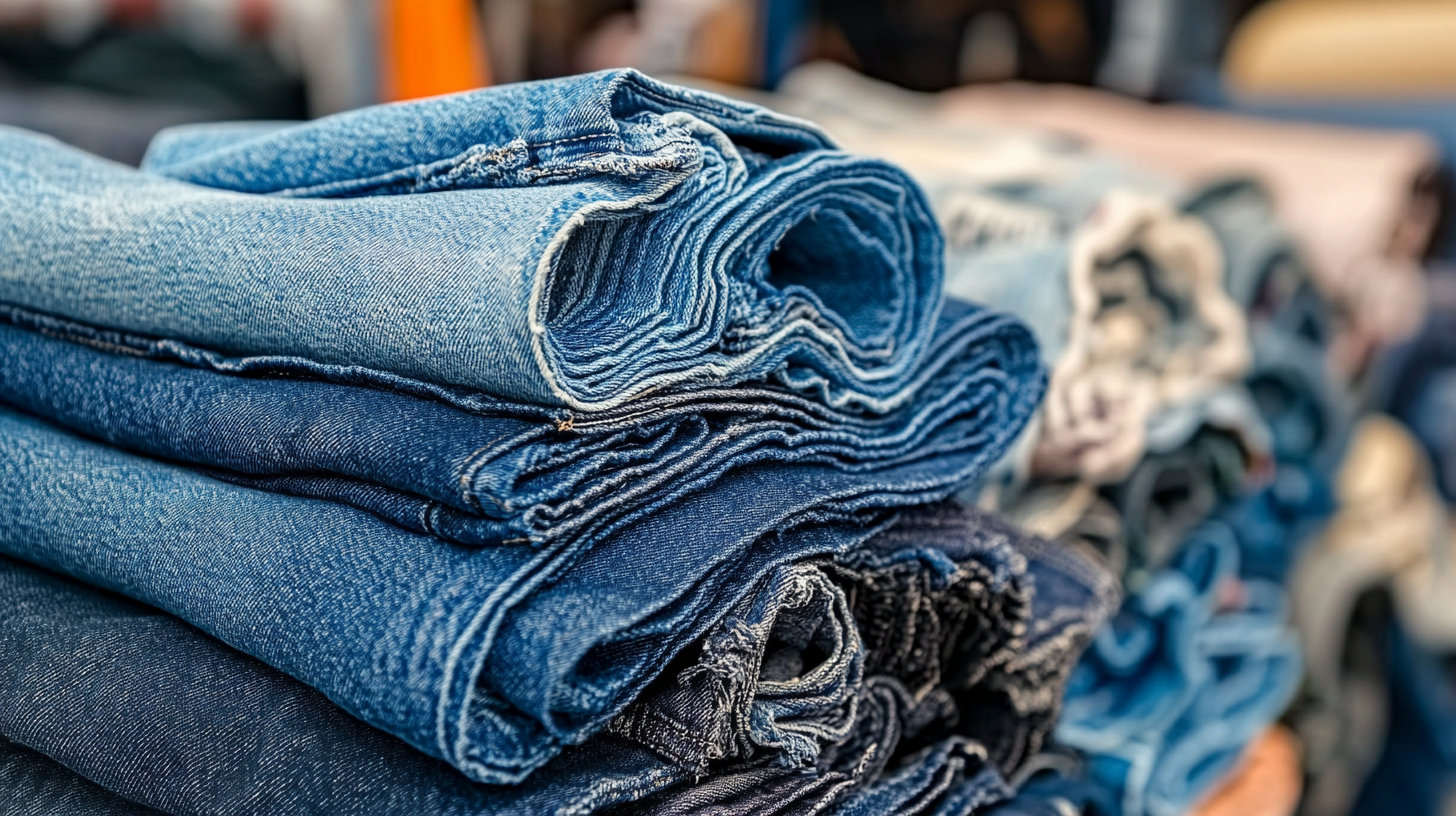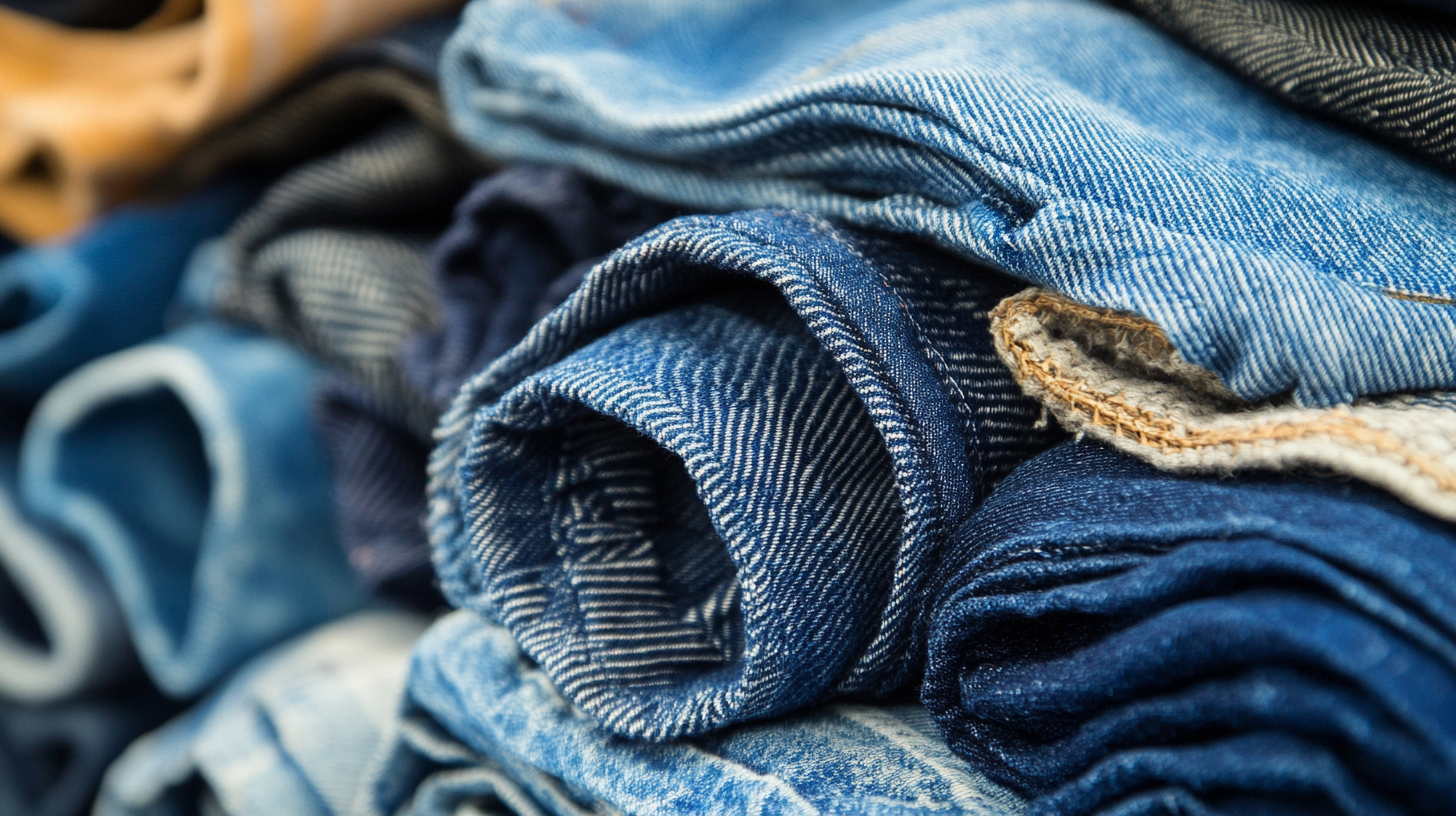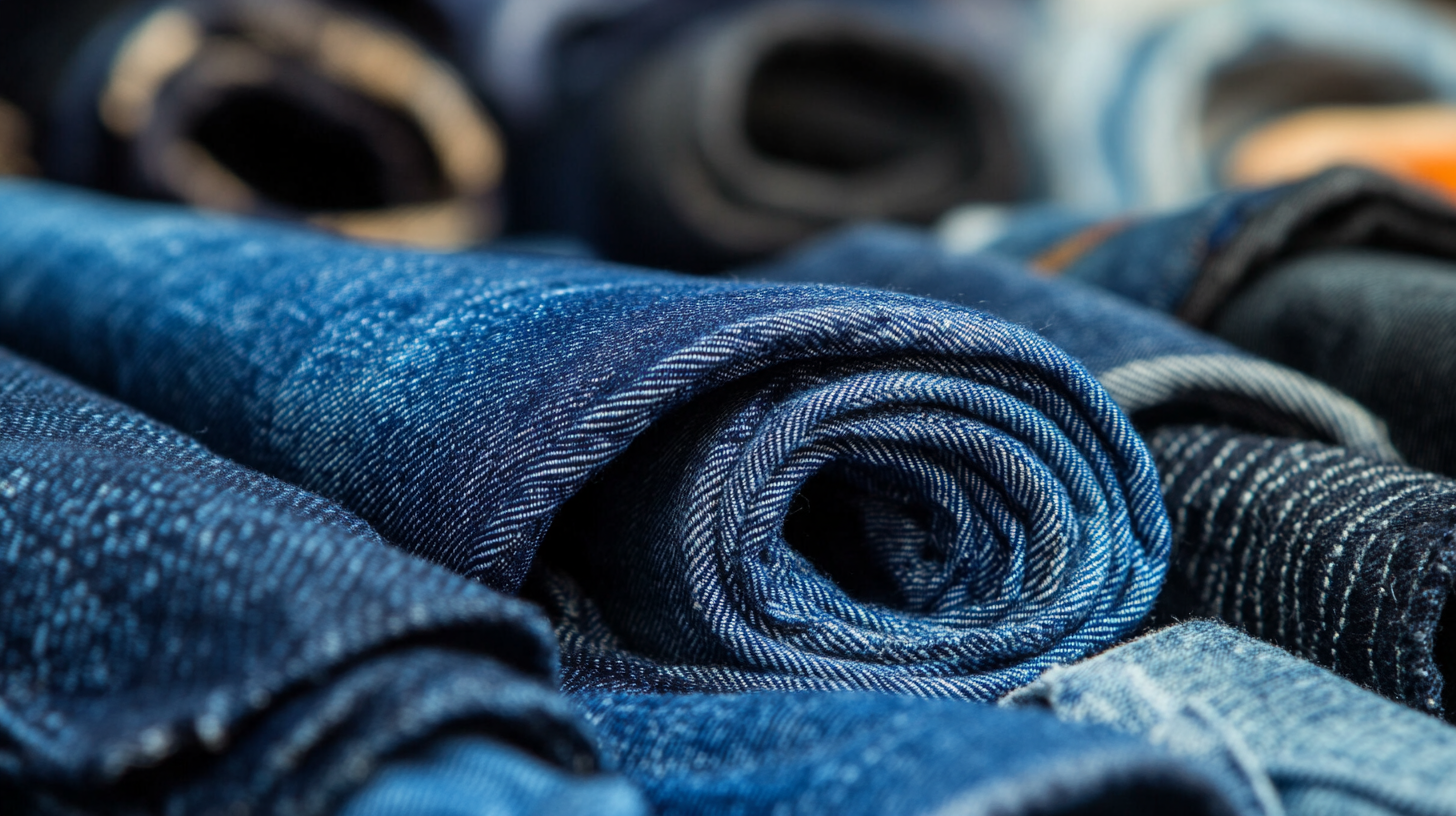In an era where sustainability is becoming increasingly vital in the fashion industry, the demand for eco-friendly materials has surged, and Recycled Denim Fabric is at the forefront of this movement. According to a report by the Global Fashion Agenda, the fashion sector is responsible for approximately 10% of global carbon emissions, underscoring the urgent need for innovative solutions such as recycled materials. By incorporating recycled denim into their product lines, businesses can significantly reduce waste, with one pair of jeans made from recycled denim diverting over 1,000 liters of water from landfills and minimizing the environmental impact. Furthermore, the growing consumer awareness and preference for sustainable products present a compelling business case for sourcing high-quality recycled denim. This blog will explore 15 practical tips for businesses seeking the best recycled denim fabric, enabling them to align with sustainable practices while meeting the rising demand for responsible fashion.

As we approach 2025, the demand for recycled denim fabric is gaining significant traction within the fashion industry. Sustainability continues to be at the forefront of consumer expectations, compelling brands to shift toward eco-friendly materials. Recycled denim not only reduces waste but also minimizes the need for virgin resources, aligning with the growing consciousness surrounding environmental impact. This shift heralds a change in market dynamics, where companies that adopt recycled materials can not only appeal to a broader audience but also enhance their brand image as responsible and innovative.
Market trends indicate that consumers are increasingly informed and concerned about their purchasing choices. By 2025, the eco-conscious demographic is projected to encompass a larger share of the market, with a strong preference for sustainable products. Businesses sourcing recycled denim fabric must recognize this trend as an opportunity to capitalize on the burgeoning demand. Providing high-quality recycled options can create differentiation in a crowded marketplace, making it essential for brands to stay ahead of the curve in sourcing practices and material innovations. As sustainability becomes synonymous with modern fashion, those who prioritize recycled denim in their offerings will not just meet consumer needs but also contribute to a more sustainable future for the industry.
When sourcing high-quality recycled denim fabric for your business, understanding the key characteristics of the material is essential. Firstly, look for denim that boasts a high percentage of post-consumer recycled content. This ensures that the fabric not only reduces waste but also meets sustainability standards.
Verify the sourcing process and ask suppliers about their recycling methods to ensure transparency and eco-friendliness, as sustainable practices are vital in today’s textile industry.
Another critical characteristic to consider is the durability of the recycled denim. Assess the fabric’s weight and construction; heavier fabrics tend to offer more resilience. This is particularly important for fashion and apparel brands that require long-lasting materials.
Additionally, pay attention to the fabric’s texture and feel. High-quality recycled denim should provide the same comfort and versatility as its non-recycled counterparts. Conducting hands-on tests can help determine the fabric's suitability for various applications, ensuring it meets the expectations of both designers and consumers alike.
As the sustainable fashion movement grows, building strong relationships with recycled denim suppliers has never been more crucial. Engaging with suppliers not only enhances your sourcing strategy but also fosters a shared commitment to sustainability. A recent report indicated that 70% of consumers are willing to pay more for brands that prioritize ethical sourcing, making these relationships not just strategic, but financially beneficial too.
Tip: Invest time in visiting suppliers’ facilities and understanding their processes. This firsthand knowledge will help you assess their sustainability practices and quality, creating a solid foundation for collaboration. Additionally, leveraging technology to facilitate communication and streamline order processes can reinforce these partnerships and drive efficiency.
The denim industry faces numerous challenges, especially in supply chain management. Recognizing these obstacles allows businesses to adapt their sourcing strategies effectively. For instance, prioritizing suppliers who embrace circular economy principles can significantly reduce waste and improve environmental impact. Tip: Establish transparent expectations regarding sustainability initiatives when negotiating with suppliers to ensure alignment and accountability. As the landscape evolves, staying ahead by nurturing these relationships is vital for success in the recycled denim market.
 In today's market, balancing cost and sustainability is crucial for businesses sourcing recycled denim fabric. According to a 2021 report by the Ellen MacArthur Foundation, the global fashion industry is responsible for producing 92 million tons of waste annually, with denim being a significant contributor. Companies that prioritize sustainable sourcing not only contribute to environmental conservation but also position themselves favorably among increasingly eco-conscious consumers. Research shows that over 66% of consumers are willing to pay more for sustainable products, indicating that investing in recycled materials can enhance a brand's reputation and customer loyalty.
In today's market, balancing cost and sustainability is crucial for businesses sourcing recycled denim fabric. According to a 2021 report by the Ellen MacArthur Foundation, the global fashion industry is responsible for producing 92 million tons of waste annually, with denim being a significant contributor. Companies that prioritize sustainable sourcing not only contribute to environmental conservation but also position themselves favorably among increasingly eco-conscious consumers. Research shows that over 66% of consumers are willing to pay more for sustainable products, indicating that investing in recycled materials can enhance a brand's reputation and customer loyalty.
When evaluating options, businesses should consider the total lifecycle cost of recycled denim, which often reflects not just the purchase price but also long-term savings in terms of waste disposal and environmental impacts. A study by the Global Fashion Agenda highlights that adopting sustainable materials could reduce greenhouse gas emissions by approximately 30% by 2030. Moreover, as technology and recycling processes improve, the price of high-quality recycled denim continues to decrease, making it an economically viable option for both new and established brands. By making informed decisions about sourcing, companies can achieve a balance that promotes sustainable practices without sacrificing their bottom line.
 As the denim industry continues to innovate, several advanced techniques in recycled denim production are making waves in sustainability and design. Notably, the integration of circular practices through collaborations among fiber producers and denim mills is essential for scaling circularity. These innovations are not only enhancing the fabric properties such as elongation and elasticity but are also addressing the pressing consumer demand for comfort and eco-friendliness in fashion. Innovations like laser technology have revolutionized processes, allowing for cleaner manufacturing with a significant reduction in harmful practices.
As the denim industry continues to innovate, several advanced techniques in recycled denim production are making waves in sustainability and design. Notably, the integration of circular practices through collaborations among fiber producers and denim mills is essential for scaling circularity. These innovations are not only enhancing the fabric properties such as elongation and elasticity but are also addressing the pressing consumer demand for comfort and eco-friendliness in fashion. Innovations like laser technology have revolutionized processes, allowing for cleaner manufacturing with a significant reduction in harmful practices.
Looking ahead to 2024, sustainable practices will dominate the denim landscape, influencing design and sourcing decisions. The shift toward consumer-driven development means brands must focus on producing high-quality, well-fitting garments that align with the rising expectation for sustainable textiles. As the denim industry embraces these innovative techniques, brands that prioritize sustainability stand to not only meet consumer demands but also contribute positively to the environment, marking a pivotal moment in the evolution of denim.
